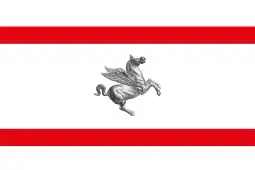This is a list of central banks.
Central banks by alphabetical order
This is a list of central banks. Countries that are only partially recognized internationally are marked with an asterisk (*).
Major central banks by currency allocation percentage of worldwide foreign exchange reserves
Source: World Currency Composition of Official Foreign Exchange Reserves, International Monetary Fund[1]
| Country Name | Central Bank Name | Currency | Currency Share Percentage of Global Allocated Reserves in Q4 2022 (%) | Central Bank Governor | Native Name of Central Bank | Establishment |
|---|---|---|---|---|---|---|
| Federal Reserve | United States dollar | 58.36 | Jerome Powell | 1913 | ||
| European Central Bank | Euro | 20.47 | Christine Lagarde | 1998 | ||
| Bank of Japan | Japanese yen | 5.51 | Kazuo Ueda | 日本銀行 / Nippon Ginkō | 1882 | |
| Bank of England | Pound sterling | 4.95 | Andrew Bailey | 1694 | ||
| People's Bank of China | Renminbi | 2.69 | Yi Gang | 中国人民銀行 / Zhōngguó Rénmín Yínháng | 1948 | |
| Bank of Canada | Canadian dollar | 2.38 | Tiff Macklem | Banque du Canada | 1935 | |
| Reserve Bank of Australia | Australian dollar | 1.96 | Michele Bullock | 1960 | ||
| Swiss National Bank | Swiss franc | 0.23 | Thomas Jordan | Schweizerische Nationalbank / Banque Nationale Suisse / Banca Nazionale Svizzera / Banca Naziunala Svizra | 1906 |
Former central banking jurisdictions
 City of Amsterdam – Bank of Amsterdam (1609-1791)[2]
City of Amsterdam – Bank of Amsterdam (1609-1791)[2] City of Barcelona – Taula de canvi de Barcelona (1401-1714)[2]
City of Barcelona – Taula de canvi de Barcelona (1401-1714)[2].svg.png.webp) British East Africa – East African Currency Board (1919-1966)
British East Africa – East African Currency Board (1919-1966).svg.png.webp) Independent State of Croatia – Croatian State Bank (Hrvatska Državna Banka, 1941-1945)
Independent State of Croatia – Croatian State Bank (Hrvatska Državna Banka, 1941-1945) Czechoslovakia – National Bank of Czechoslovakia (1926–1939 and 1945-1950) and State Bank of Czechoslovakia (1950–1992)
Czechoslovakia – National Bank of Czechoslovakia (1926–1939 and 1945-1950) and State Bank of Czechoslovakia (1950–1992) Free City of Frankfurt – Frankfurter Bank (1854-1875)
Free City of Frankfurt – Frankfurter Bank (1854-1875) Republic of Genoa – Bank of Saint George (1407-1805)[2]
Republic of Genoa – Bank of Saint George (1407-1805)[2] German Democratic Republic – Deutsche Notenbank (1948-1968) and Staatsbank der DDR (1968-1990)
German Democratic Republic – Deutsche Notenbank (1948-1968) and Staatsbank der DDR (1968-1990) Free and Hanseatic City of Hamburg – Hamburger Bank (1619-1875)[2]
Free and Hanseatic City of Hamburg – Hamburger Bank (1619-1875)[2] Korea under Japanese and American rule - Bank of Korea (1909–1950)
Korea under Japanese and American rule - Bank of Korea (1909–1950) Manchukuo – Central Bank of Manchou (1932-1945)
Manchukuo – Central Bank of Manchou (1932-1945).svg.png.webp) General Government - Bank of Issue in Poland (1940-1945)
General Government - Bank of Issue in Poland (1940-1945).svg.png.webp) Kingdom of Prussia – Prussian Royal Bank (1765-1846) and Bank of Prussia (1847-1875)
Kingdom of Prussia – Prussian Royal Bank (1765-1846) and Bank of Prussia (1847-1875).svg.png.webp) Kingdom of Sardinia – Banca Nazionale negli Stati Sardi (1849-1861), itself formed through the merger of Banca di Genova (1846-1849) and Banca di Torino (1847-1849)
Kingdom of Sardinia – Banca Nazionale negli Stati Sardi (1849-1861), itself formed through the merger of Banca di Genova (1846-1849) and Banca di Torino (1847-1849) South Vietnam – National Bank of Vietnam (1954-1975)
South Vietnam – National Bank of Vietnam (1954-1975) Kingdom of the Two Sicilies – Banco di Napoli, under different names from 1463 to final end of central banking role in 1926[2]
Kingdom of the Two Sicilies – Banco di Napoli, under different names from 1463 to final end of central banking role in 1926[2] Grand Duchy of Tuscany – Banca di Firenze (1816-1893), renamed National Tuscan Bank from 1857
Grand Duchy of Tuscany – Banca di Firenze (1816-1893), renamed National Tuscan Bank from 1857 Soviet Union – People's Bank (1917-1922) and Gosbank (1922-1991)
Soviet Union – People's Bank (1917-1922) and Gosbank (1922-1991) Republic of Venice – Banco del Giro (1524-1806)[2]
Republic of Venice – Banco del Giro (1524-1806)[2].svg.png.webp) Yugoslavia – National Bank of the Kingdom of Serbs, Croats and Slovenes (1920-1929), National Bank of the Kingdom of Yugoslavia (1929-1941), and National Bank of Yugoslavia (1946-2003)
Yugoslavia – National Bank of the Kingdom of Serbs, Croats and Slovenes (1920-1929), National Bank of the Kingdom of Yugoslavia (1929-1941), and National Bank of Yugoslavia (1946-2003)
See also
- Central banks and currencies of Africa
- Central banks and currencies of the Caribbean
- Central banks and currencies of Central America and South America
- Central banks and currencies of Europe
- List of currencies
- International Monetary Fund – Lender of last resort to countries short of liquidity
- Bank for International Settlements – an international organisation which fosters international monetary and financial cooperation and serves as a bank for central banks.
Notes
External links
This article is issued from Wikipedia. The text is licensed under Creative Commons - Attribution - Sharealike. Additional terms may apply for the media files.